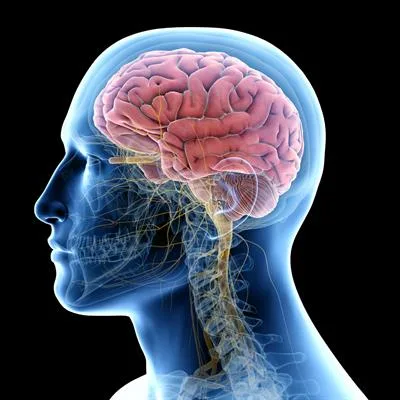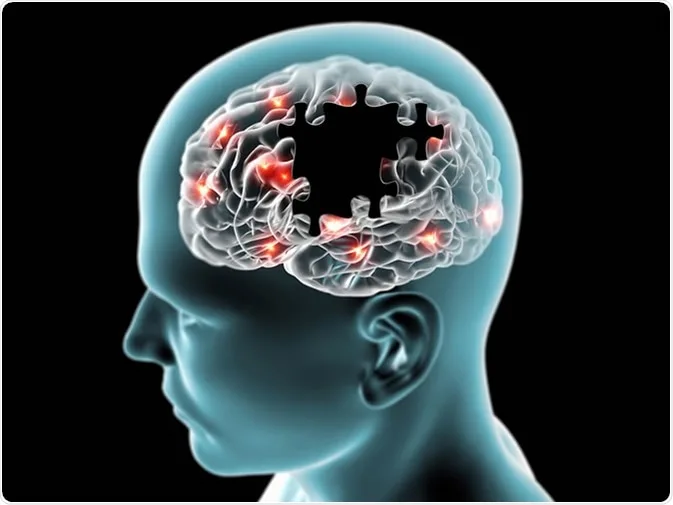Every day, without fanfare, our brains conduct a silent symphony of choices. From deciding which side of the bed to roll out of in the morning to weighing the ethics of a complex moral dilemma, our decisions emerge from a hidden network of neural conversations. To the untrained eye, these choices seem spontaneous, perhaps even free-willed. But beneath the surface, billions of neurons exchange electrical whispers, sculpting our preferences and actions long before we are even aware of them.
At its core, decision-making is not a single act, but a process—a choreography involving sensory perception, emotional valuation, memory recall, and risk assessment. The human brain, with its 86 billion neurons and trillions of synaptic connections, acts less like a dictator issuing orders and more like a parliament where different regions argue, negotiate, and finally reach a verdict. This neural parliament decides everything from whether to eat a second slice of cake to whether to take a career risk.
To understand why we choose what we do, we must step into this parliament and watch its debates unfold.
The Architecture of Choice
The human brain has evolved over millions of years, layering newer cognitive structures atop ancient survival mechanisms. This evolutionary history explains why some decisions feel instinctive while others require agonizing deliberation. The limbic system, a deep and ancient part of the brain, deals with emotion, motivation, and reward. Structures like the amygdala and nucleus accumbens light up when we face emotionally charged or rewarding options. Meanwhile, the prefrontal cortex, the seat of executive function, handles abstract thinking, planning, and self-control.
These regions don’t work in isolation. Instead, they operate in dynamic balance. The prefrontal cortex might urge patience and strategic thinking, while the limbic system demands immediate gratification. Neuroscientists often compare this to a horse and rider: the emotional brain is the powerful horse, full of energy and instinct, while the rational brain is the rider, attempting to steer toward long-term goals. When they work in harmony, we make balanced choices. When one overpowers the other, our decisions can swing toward impulsivity or excessive caution.
Functional MRI studies have revealed that even seemingly simple choices—like selecting between two snacks—activate a network that spans sensory cortices, valuation circuits, and memory retrieval areas. This suggests that every decision draws on a lifetime of stored experiences, preferences, and learned associations. Choosing a chocolate bar over an apple may not be about the moment’s taste alone but about childhood memories, cultural conditioning, and even subtle hormonal fluctuations.
The Hidden Timers of the Brain
One of the most startling revelations in neuroscience came from experiments in the 1980s by Benjamin Libet, who found that neural activity related to a decision can begin hundreds of milliseconds before a person reports consciously deciding. This “readiness potential” suggests that our brains prepare for action before we are aware of having chosen. More recent research with advanced brain imaging has pushed this time window even further back, detecting decision-related patterns seconds before conscious awareness.
This does not mean free will is an illusion, but it complicates our understanding of it. Conscious choice may be less about originating decisions and more about endorsing or vetoing impulses generated unconsciously. In other words, the conscious mind might be more like a curator than a creator, selecting which of the brain’s many pre-generated possibilities to put into action.
From an evolutionary standpoint, this makes sense. In a dangerous environment, speed often trumps conscious deliberation. Our ancestors didn’t survive by slowly analyzing whether a rustle in the bushes was a predator—they reacted instantly. This rapid, subconscious processing remains active in modern life, influencing decisions from braking during a near-accident to instinctively trusting or distrusting a stranger.
Emotion as the Compass of Choice
While logic is often celebrated as the highest form of human reasoning, emotions are not irrational interlopers in the decision-making process—they are essential guides. Antonio Damasio’s work with patients who had damage to the ventromedial prefrontal cortex, an area integrating emotion and reasoning, revealed a startling pattern: these individuals could think logically about options but struggled to make even the simplest decisions. Without emotional input, every choice felt equally weighted, leaving them paralyzed in indecision.
The amygdala plays a central role here, tagging stimuli with emotional significance. The nucleus accumbens and ventral tegmental area process rewards, releasing dopamine when we anticipate positive outcomes. This neurochemical dance biases our attention and motivates us toward certain choices over others.
Emotions act as a kind of shorthand for the brain, condensing complex cost-benefit analyses into quick intuitive feelings: a surge of excitement, a pang of dread, a gut instinct. This is why we can sometimes make surprisingly accurate judgments in situations where we lack detailed information. Our emotional systems have been shaped by evolutionary pressures to detect and respond to subtle environmental cues long before we can articulate why.
Memory’s Subtle Hand in Decisions
Every choice is influenced by the ghostly presence of memory. The hippocampus, deep within the temporal lobe, retrieves past experiences relevant to the present situation. The brain does not store memories as perfect recordings; instead, they are reconstructed each time we recall them, infused with present emotions and biases. This means our decisions are guided by a blend of fact and interpretation.
Consider choosing a restaurant. The decision might be swayed by a hazy but pleasant recollection of a meal years ago, even if the details are fuzzy. The brain’s reward systems re-fire when recalling positive memories, nudging us toward repeating behaviors that once brought satisfaction.
Memories also play a role in learning from mistakes. Negative outcomes trigger activity in the anterior cingulate cortex, a region involved in error detection and conflict monitoring. This helps the brain adjust strategies for future decisions, making our choices a living record of our past trials and triumphs.
The Tug-of-War Between Risk and Reward
Decision-making often boils down to balancing potential rewards against possible risks. The brain’s valuation system, anchored in the ventromedial prefrontal cortex and the striatum, continuously updates predictions about outcomes based on experience. Dopamine neurons signal prediction errors—when outcomes are better or worse than expected—allowing us to refine our expectations.
Risk perception is shaped not only by objective probabilities but also by emotional responses. The insula, a region associated with interoception and the sense of bodily states, becomes active when anticipating losses or danger. People with reduced insula activity, such as certain neurological patients, may take reckless risks because they do not feel the bodily warning signals of anxiety as strongly.
Interestingly, risk tolerance can change with context. Hunger, fatigue, stress, and even hormonal cycles can shift the brain’s weighting of short-term versus long-term rewards. This is why someone might make more impulsive purchases late at night or take greater gambles when emotionally charged.
Social Influences on the Brain’s Decisions
Humans are not solitary decision-makers; our choices are profoundly shaped by social contexts. The medial prefrontal cortex, temporoparietal junction, and posterior superior temporal sulcus form part of the “social brain,” allowing us to model other people’s thoughts and intentions. This mentalizing ability lets us predict how others might react to our decisions, shaping our behavior accordingly.
Peer influence can activate reward circuits, making socially approved choices feel more gratifying. Conversely, social rejection activates the same brain regions that process physical pain, motivating us to conform. Neuroimaging studies have shown that group consensus can sway individual perceptions, even in simple visual tasks, highlighting how deeply social context can penetrate our neural decision-making machinery.
Cultural norms further mold the brain’s decision architecture. In collectivist cultures, choices may prioritize group harmony and shared benefit, while individualistic cultures may emphasize personal preference and autonomy. These cultural patterns are not just learned—they are reflected in measurable differences in brain activation during decision tasks.
The Energy Cost of Choices
The brain is a metabolically expensive organ, consuming about 20% of the body’s energy despite being only 2% of its weight. Every decision, particularly those requiring conscious deliberation, carries an energetic cost. This has led to the concept of “decision fatigue,” the idea that the quality of our decisions can degrade after prolonged decision-making sessions.
Neuroimaging has shown that tasks requiring self-control or complex reasoning engage the dorsolateral prefrontal cortex, which may experience temporary reductions in efficiency after sustained use. This is why judges, for example, have been found to grant parole more often in the morning or after breaks than late in the day—a sobering reminder that even serious, high-stakes decisions are subject to the brain’s resource limitations.
When Decisions Go Wrong
While the neuroscience of decision-making often celebrates optimal functioning, the system can falter. Disorders such as addiction, obsessive-compulsive disorder, and depression can warp valuation systems and impair judgment. In addiction, for example, the brain’s reward pathways become hypersensitized to drug-related cues, overriding other considerations and leading to repeated harmful choices. In depression, the reward system’s response to positive stimuli is blunted, making future-oriented decision-making more difficult.
Neurological damage can also produce striking changes. Injury to the prefrontal cortex can result in impulsivity, poor planning, and difficulty learning from mistakes—symptoms collectively known as “dysexecutive syndrome.” Such cases underscore that decision-making is not an abstract concept but a concrete biological function rooted in fragile neural machinery.
The Future of Understanding Choice
Advances in neuroscience are beginning to map decision-making at an unprecedented level of detail, from single neurons tracking reward probabilities to large-scale brain networks orchestrating moral reasoning. Artificial intelligence models of decision-making are now informed by these neural principles, and brain-computer interfaces hint at a future where impaired decision-making could be augmented by technology.
Yet with greater insight comes ethical complexity. If we can predict decisions before they are consciously made, how does this affect concepts of responsibility and free will? If brain stimulation can nudge someone toward one choice over another, where is the line between therapy and manipulation? These questions will shape not only the science of decision-making but the moral landscape of the 21st century.
The Unfinished Story of Why We Choose
Ultimately, decision-making is where biology meets biography. Every choice reflects the interplay of neural circuitry honed by evolution and experiences unique to each individual. The brain is both a prediction machine and a meaning-making organ, drawing on ancient survival strategies and personal histories to chart a path through the present.
While neuroscience has revealed much about the mechanics of choice, it has not—and perhaps cannot—fully capture the subjective richness of deciding. There is something irreducibly human about pausing at a crossroads, feeling the weight of possibilities, and stepping into an unknown future. In that moment, the brain’s electrical symphony becomes a lived experience, one that shapes the person we are and the person we are becoming.
The neuroscience of decision-making shows us that choice is not merely about logic or chance—it is a story written in the language of neurons, emotions, memories, and hopes. And it is a story still unfolding, with every decision we make.






